UK Drive: Toyota’s Camry is a refined and efficient saloon car option

What is it?
The Camry name is back – and it’s replacing the Avensis as the main saloon in Toyota’s range. And though fewer people are buying saloons – instead opting for larger SUVs and crossovers – the firm believes the bringing the well-known moniker back to UK roads can only be a good thing. It’s now packed with tech, as well as a cutting-edge hybrid drivetrain designed to drive emissions down and economy up.
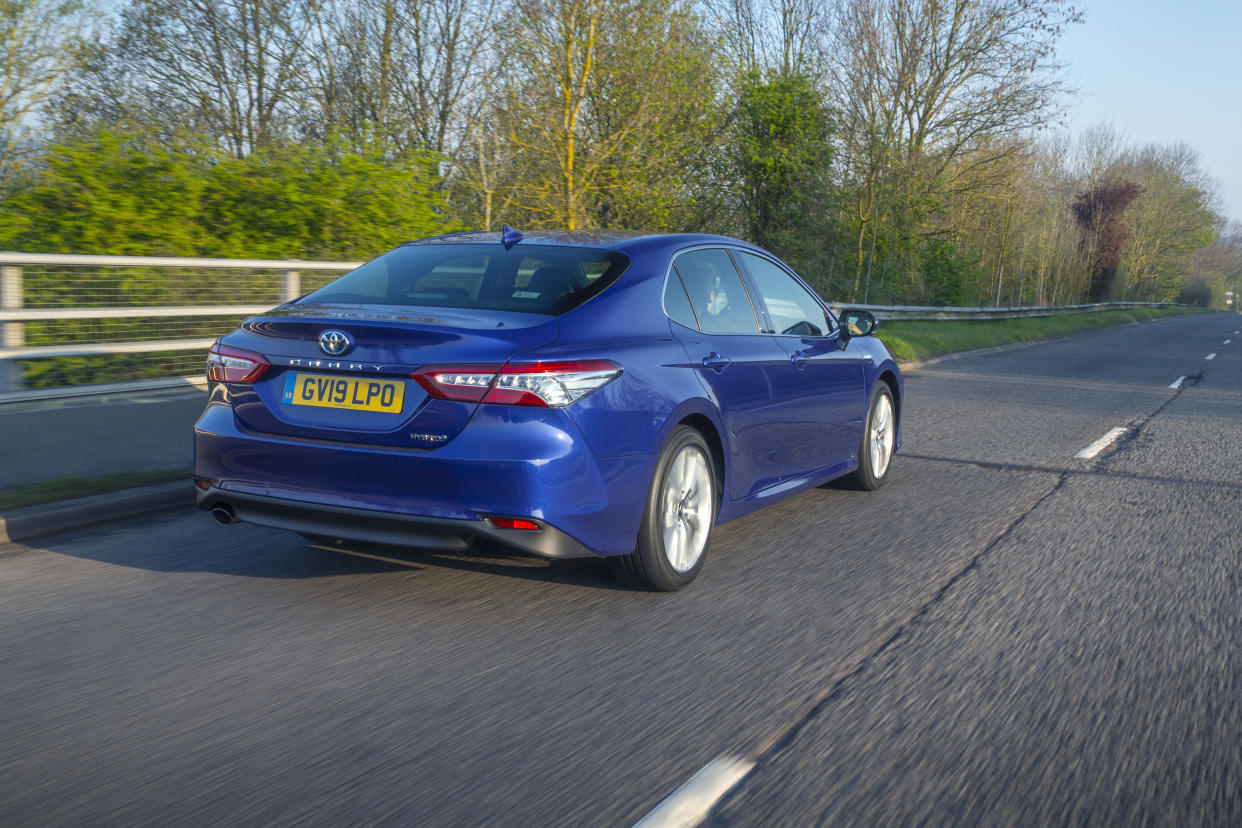
But can it compete with the segment leaders such as Audi’s A4 and the BMW 3 Series? We’ve been out on to our favourite roads to find out.
What’s new?
That hybrid powertrain is one of the standout features of the new Camry, but besides that there’s a sharp exterior design and an equally futuristic-looking interior. But because it’s a saloon car Toyota has keyed in on spaciousness and boot space — resulting in a car that’s actually a longer car than the Skoda Superb, or even the Volkswagen Passat.
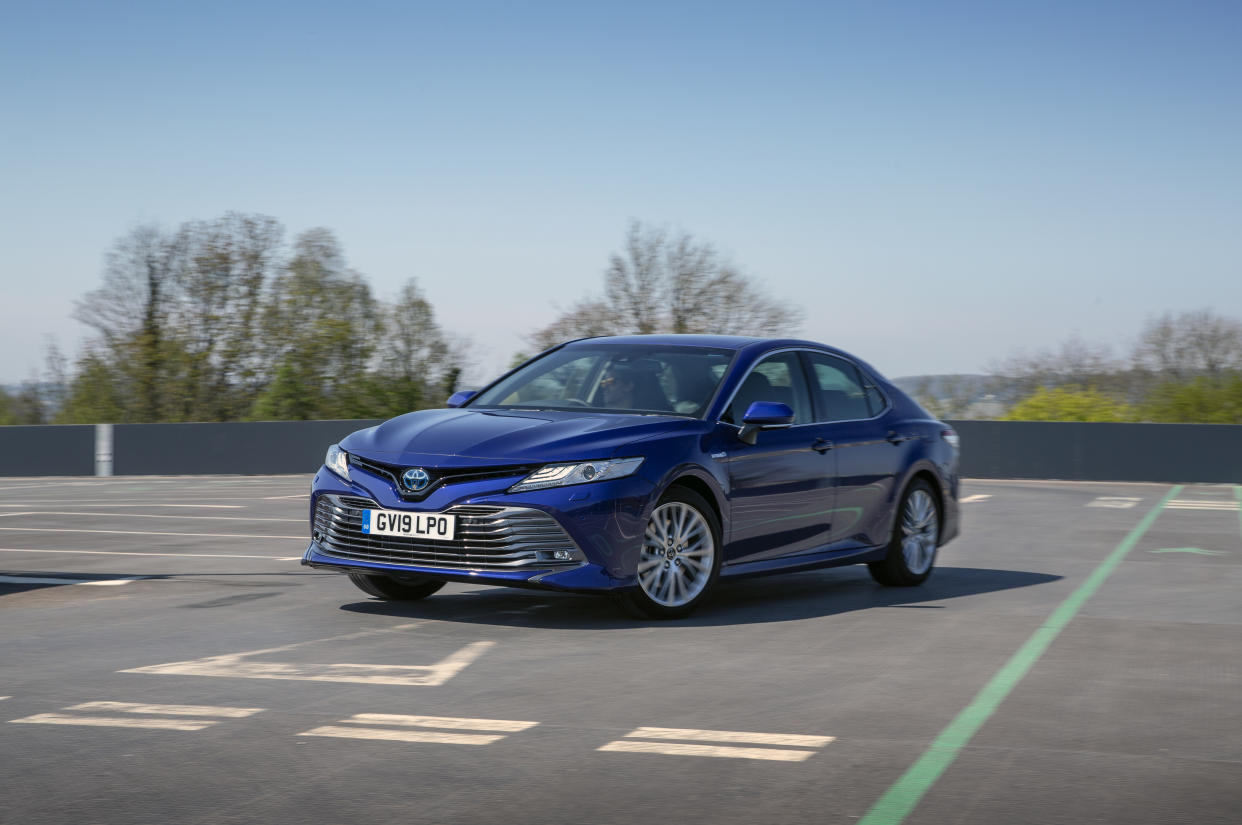
It’s worth mentioning that there won’t be a plug-in version of the Camry available; this is going to be strictly a regular hybrid, so those who like to charge on the go or top up the batteries at home may have to look elsewhere.
What’s under the bonnet?
The Camry’s powertrain starts, first and foremost, with a 2.5-litre petrol engine. This is then linked to a hybrid system. Power – there’s 215bhp and 221Nm of torque available here – is sent to the road through a CVT gearbox. Going from 0-60mph take 8.1 seconds, and all in the Camry will reach 112mph.
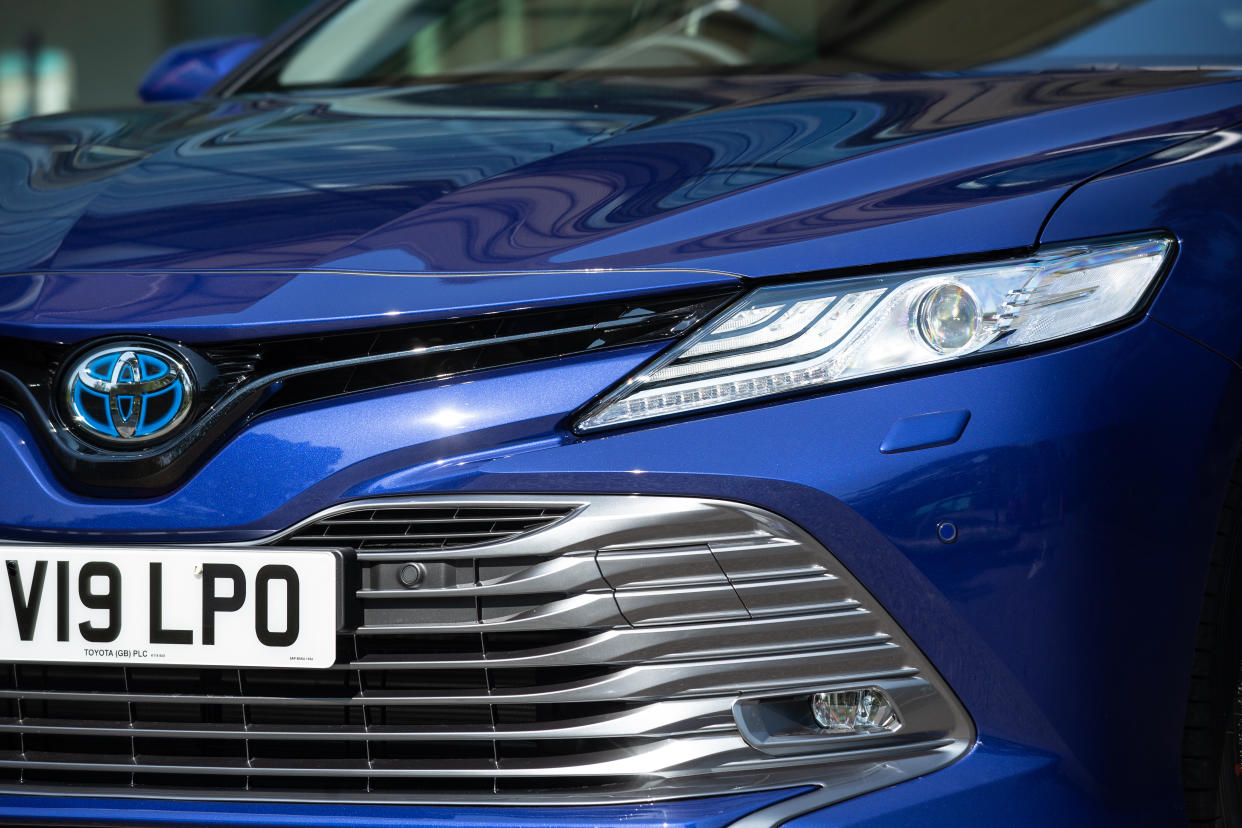
But in a car like this performance figures aren’t top of the agenda. That hybrid system has been put into place for efficiency, which is why Toyota claims that Camry will return up to 50.4mpg combined while emitting 101g/km CO2. Both of these will come as welcome news to business owners, where CO2 outputs make all the difference.
What’s it like to drive?
To say that the Camry isn’t sparkling to drive misses the point of the car in general. No, it may not be exciting to pitch around a winding road or exploit sharpening hairpins, but it gets the bread-and-butter driving done extremely well. Around town it’s serene and quiet, while on motorway speeds its refinement means that longer journeys don’t take much of a toll on the driver.
That CVT gearbox does mean the powertrain is quite vocal under hard acceleration – though it’s by far one of the better drivetrains we’ve experienced. Once you’re over the initial need for shove, the whole car quietens down well. In fact, there feels as though there’s a lot more power on tap than the numbers suggest, which is no bad thing.
How does it look?
To be kind to it, the Camry doesn’t look a lot like anything else on the road today. Of course, views on appearance are down to the individual, but the Camry’s styling doesn’t particularly make itself stand out – there’s just not a lot to attract the eye to it, despite there being few cars which share many of its design cues.
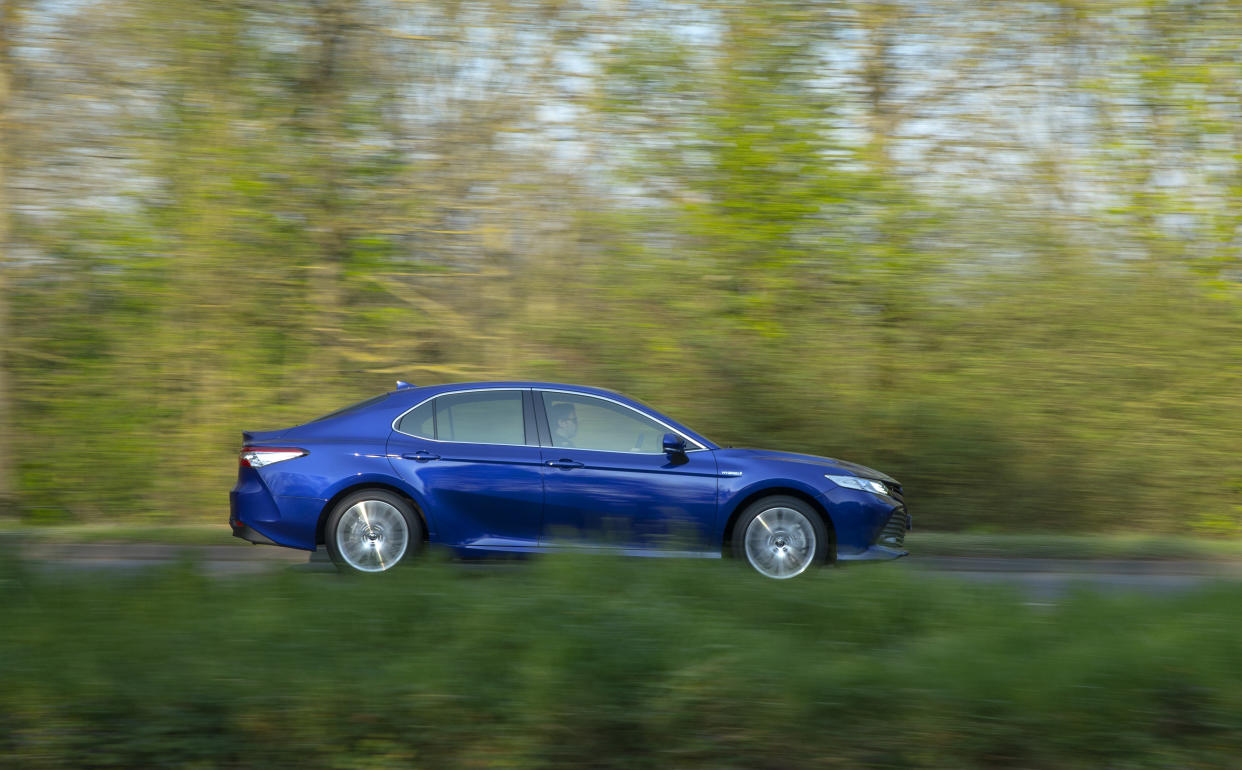
Our particular car’s colour – a natty shade of brown – didn’t really help things. Sleek, yes, but it’s not a car that you’d particularly notice parked up at the side of the road, nor cruising past on the motorway. We’d argue that a brighter colour would certainly help things.
What’s it like inside?
The interior of the Camry is big, comfortable and spacious. The seats are well padded and a welcome addition on longer journeys, while it’s not hard to get into a comfortable driving position thanks to plenty of adjustability. It’s a cockpit which feels quite driver-focused too – there’s a big arc of plastic which angles the dash towards whoever is behind the wheel which helps this feeling.
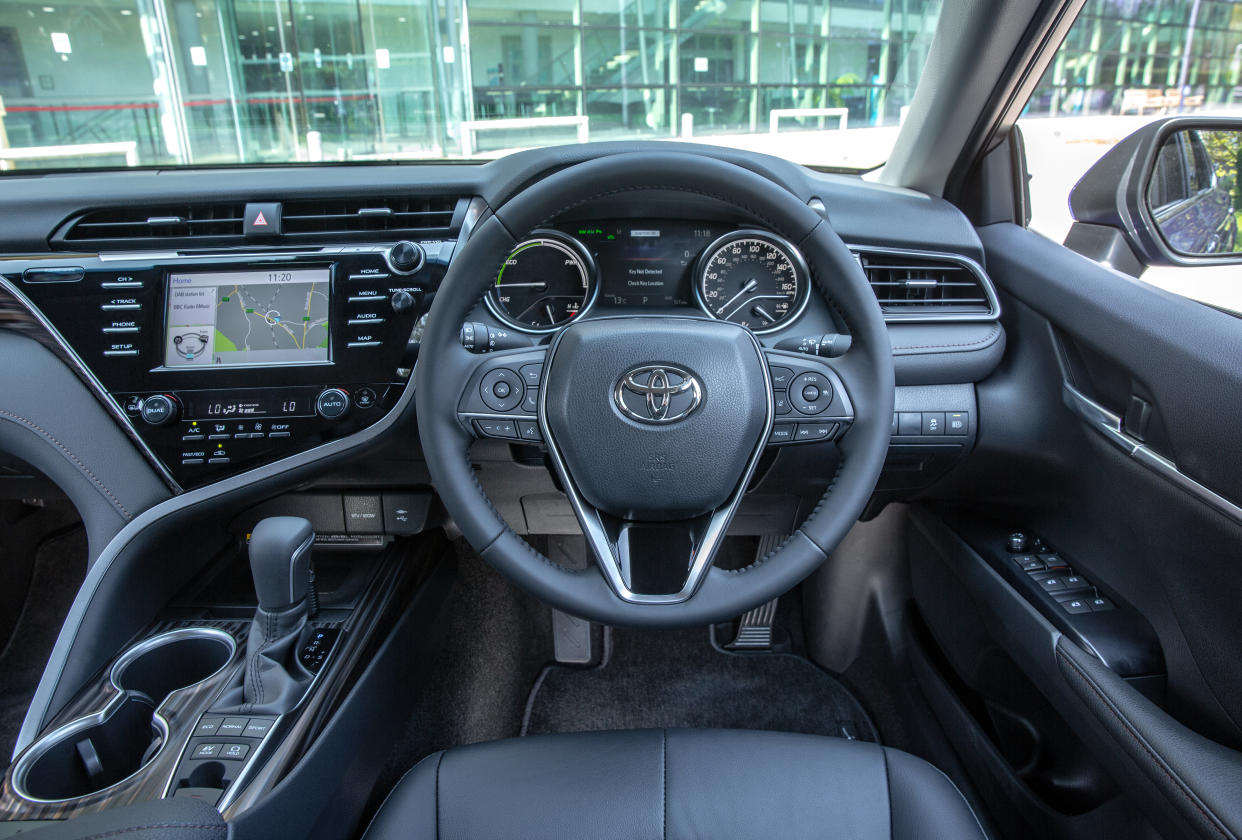
Those in the back are well catered for when it comes to space too; there’s a good amount of leg and headroom too, and the windows are large – these help to let plenty of light in and give the cabin an airier, more spacious feel.
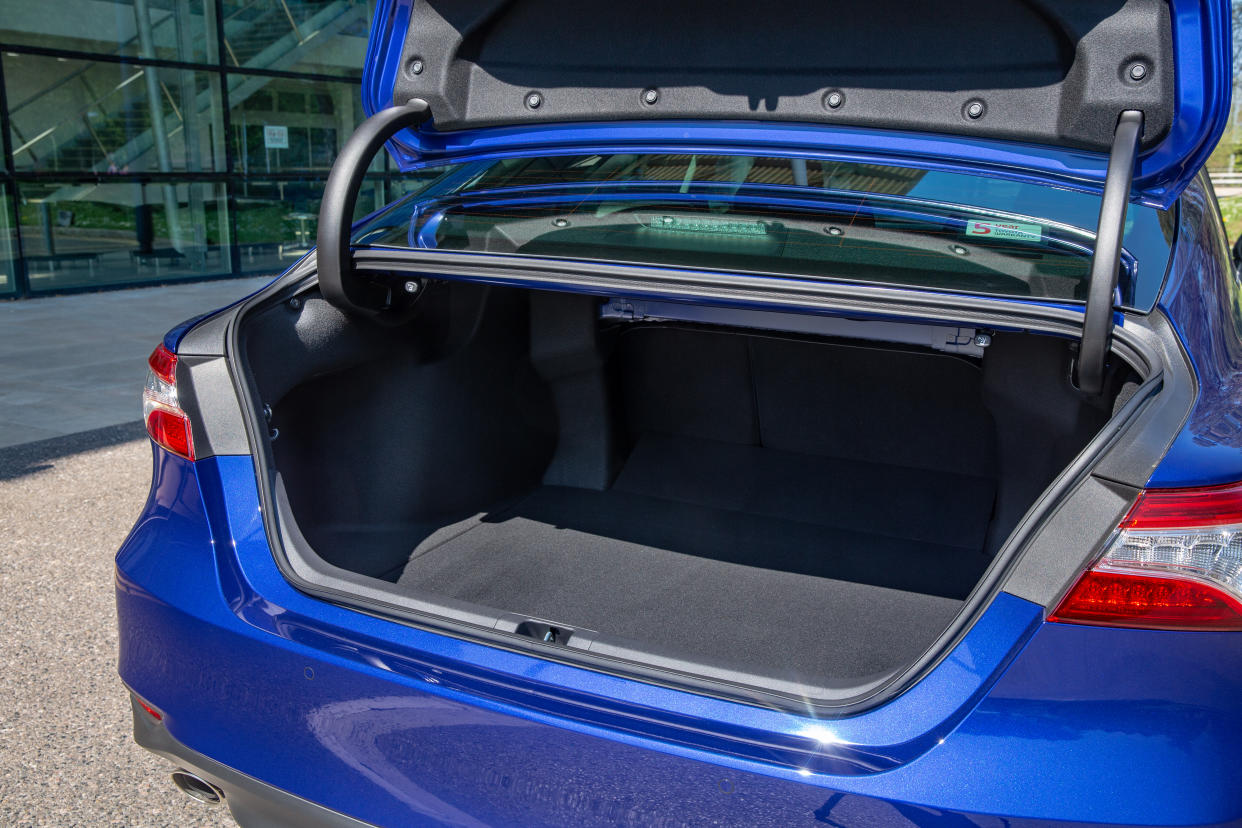
When it comes to boot space, the Camry offers up a decent 524 litres. It’s a long load area, and because the boot lip isn’t too high nor too pronounced, it’ll be ideal for larger, heavier items.
What’s the spec like?
The main infotainment offering with the Camry is a seven-inch version. There’s no option to upgrade this either – it’s the same unit on both available trim levels. Unfortunately, it lags someway behind most rival offerings, both in terms of outright size and ease-of-use. The graphics look a little dated, while the menus are difficult to navigate and the controls are clunky to use. It’s easily one of the weak points of the Camry.
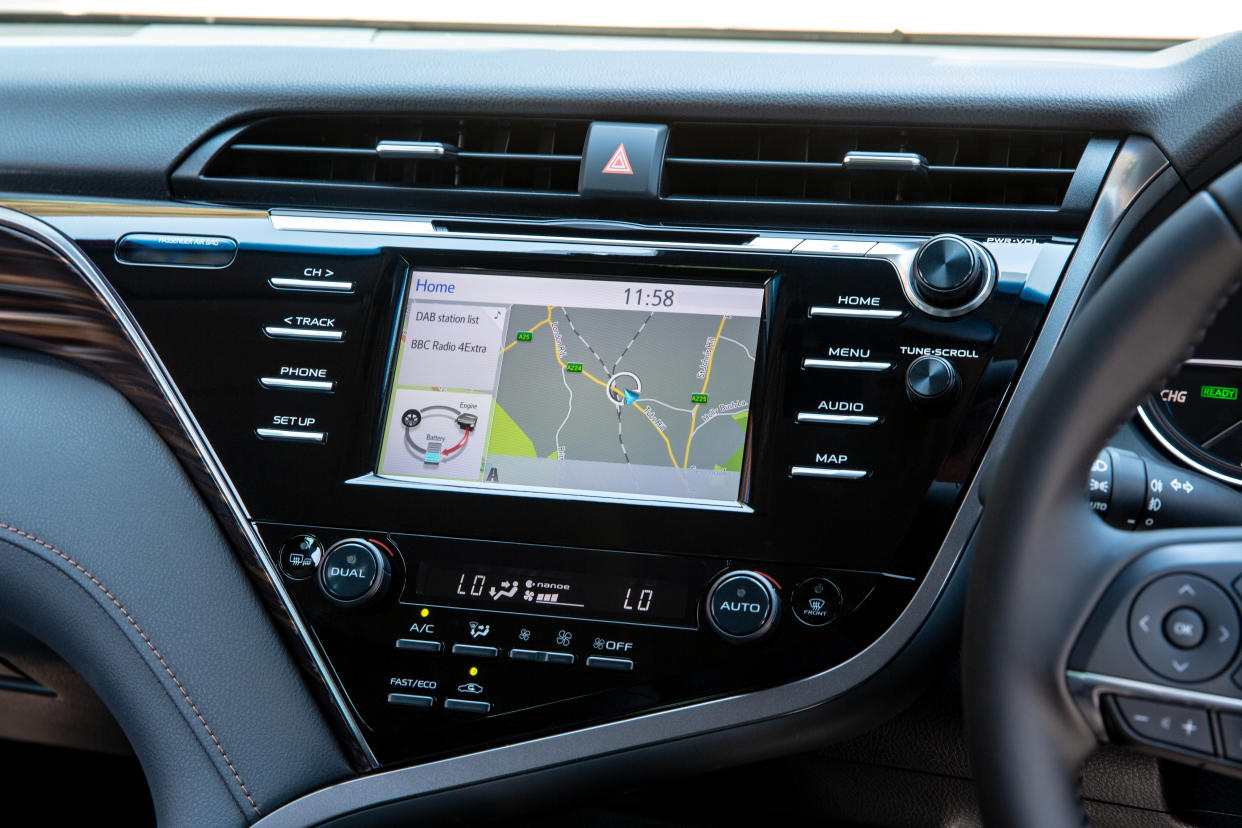
There’s no integrated Apple CarPlay or Android Auto either, which means those who prefer to mirror their smartphone screens on the car’s system will be left out. It’s shame, particularly as both systems are becoming a common sight on most new cars.
Verdict
If you’re looking for a comfortable, refined and efficient large saloon car, then the Camry could be for you. Yes, it may not be the most exciting nor the most sparkling to drive, but it rallies with low emissions and great economy figures – aspects which will be more than attractive for business users.
Though a behind-the-times infotainment system does let the side down a touch, it’s only a small criticism of what is otherwise a well-rounded, if unexciting, saloon car.
Model: Toyota Camry
Price: £31,295
Engine: 2.5-litre petrol linked to hybrid motor
Power (bhp): 215
Torque (Nm): 221
Max speed (mph): 112
0-60mph: 8.1
MPG: 50.4
Emissions (g/km): 98


